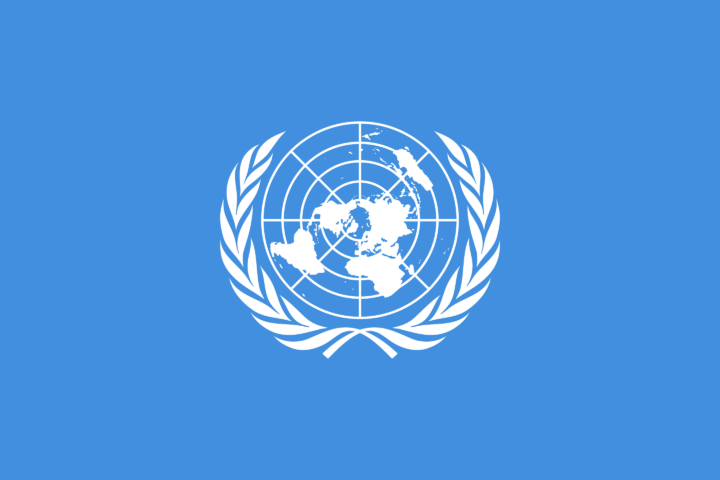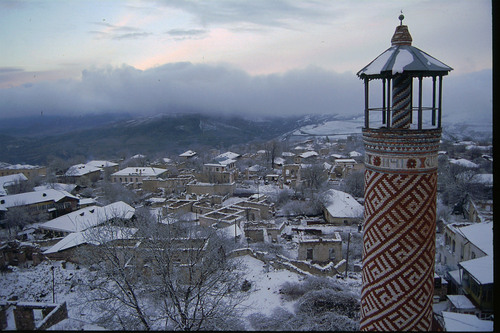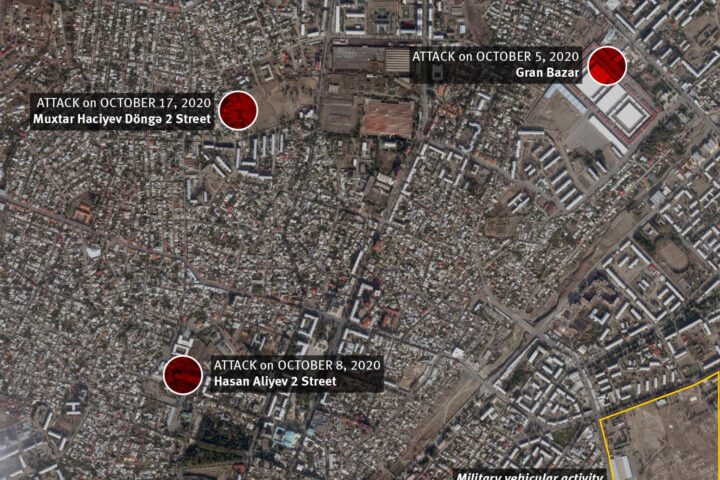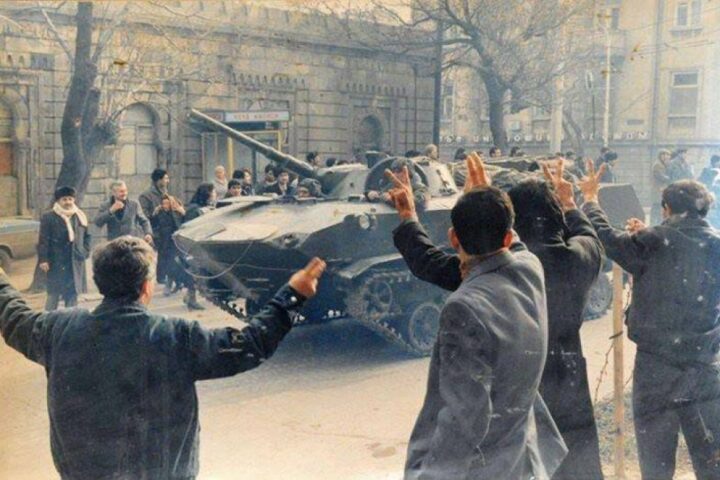3. The Soviet-post-Soviet level of the conflict
The Karabakh conflict is not the first ethnic conflict in the dying agonies of the USSR, but it is both the first long-term and most fierce such armed conflict. One tendency was observed at those times – growing tensions in the area that was later called the “southern underbelly” of the USSR (Russia). Here there were concentrated conservative regimes that considered communism as a suitable form of medieval rule. It is in this region that “perestroika” failed to find support in government structures. There is an opinion that inter-ethnic confrontations, uncharacteristic for the Soviet regime, had been provoked by the “Center” with the only goal of undermining the prestige of the local conservative authorities and replacing the leaders of the old type with new “reformist” ones, although still from the communist nomenclature. If it is so, then these processes were not thoroughly thought over, nor were they supported by any efforts aimed at containing the consequences of the conflicts and removing third party agents and actors that were inevitably involved in such events that had a good prospect in terms of realisation of their political ambitions6. By changing the elite, the Center was faced with qualitatively new problems that it could never control as fully as it had done before. The hypocritical slogans of “perestroika” were seized at the early stage by the emerging national elites, but then, however, they again passed to the arsenal of the regenerated nomenclature that tasted pure initial capital and was deprived of any, except verbal, support for liberalism, freedom, democracy, market relations and human rights.
For new elites, ethnic conflicts were gradually turning into a method for:
a) political mobilization;
b) putting pressure on the government;
c) seizure of power;
d) retention of power;
e) creation of “black holes” on the territory of what was still a single state for smuggling abroad great amounts of money, raw material, narcotics, “human commodities”, weapons, etc.
This suited everyone “running from the sinking ship of the USSR”, except the inhabitants of these “black holes” who were forced to ensure these channels were kept open at the price of the escalation of military confrontation and a sharp fall in living standards, a weakening of security and chaos in law, and a paralysis of the human rights protection mechanisms on the territories in conflict. The formation of significant capital helped the new elites to “lobby” their interests with the Center that was also passing into the hands of the new nomenclature.
The sudden collapse of the USSR, performed by the scenario of the “Belovezhie agreements” provided a favorable moment to end the conflicts in the South Caucasus, but it was missed because of the dependence of the stability of the authorities in the region on successes and failures in conflicts. And the course of the conflicts largely depended on the deliveries of Russian weapons and even the participation of Russian military instructors. The post-Soviet victories and defeats of the countries of the region, especially the Republic of Armenia and the Azerbaijan Republic, relied heavily on “donations” from the Russian Federation. The Azerbaijan Republic and Georgia, which had not joined the CIS, gradually became the targets of Russia’s political, economic and military pressure and eventually changed both their governments and, temporarily, their political orientation. Nevertheless, Russia failed to propose any sensible variant of solving the conflicts in the region, to render any economic assistance or to offer a way for integration (although Russia played a decisive role in the achievement of the ceasefire in the Karabakh and other conflicts of the region). No one can foresee the dynamics of the economic development of this country. And the fatal frustrations and failures of reforms arouse stable scepticism even in relation to such an active figure as President Putin. Out of necessity, Russia is being guided by the priorities of its political interests and, in the aspect of these interests, the conflicts of the South Caucasus have to remain suspended for an indefinite time. It is quite predictable what attitude Russia will manifest in case of an achievement of a hypothetical agreement between the Republic of Armenia and the Azerbaijan Republic and their reorientation to the West, excluding Moscow from partnership in the region7.
History again presents such a chance to the countries of the region, however strange it might seem. But what will be the actions of the authorities and the public? The Republic of Armenia holds the key role in this matter. But again, there is no common center in this country to take a history-making decision. It can not be ruled out, though, that these countries of the region may make a decision in favor of the Russian Federation, that is, to return to the political umbrella of Moscow. In this case it is necessary to consider variants for political and especially economic development and the rate of the Russian Federation’s integration into the European community. The point is that this rate will determine the degree of the United States’ “withdrawal” from European affairs. But for the time being, we can observe a polarization of the political orientation of the countries which is on the whole negative for the region: Azerbaijan – USA, Georgia – Western Europe (and lately the USA) and Armenia – Russia. True, the involvement of all the three countries of the South Caucasus in the EU program (known as “The New Neighborhood”) in June 2004 has raised hopes that integration tendencies in the South Caucasus will finally prevail over the prolonged “disintegration.”
Anyway, there may again be a historical chance for the countries of the region to come to terms on the differences that have been rending them apart. It seems, however, that their political elites are not yet mature enough to make unpopular, but eventually necessary decisions capable of putting an end to conflicts and restoring mutual trust in the region. However, it is already a positive phenomenon that the growing understanding holds that there is no real alternative to peaceful negotiations and only in this way can the conflicting sides enter a system of mutual guarantees of security, stability and cooperation in the region.
Considering what was stated above, the intellectual and political elites must assume the task of mulling over variants of uniting and elaborating a common political orientation for the countries of the region. It does not at all mean that this, as many people think, will be a new, one-sided and strict orientation to one country. It means a tripartite, complex of vision of the political future of the South Caucasus.
The international aspects of the Nagorno Karabakh conflict
[no_toc]











